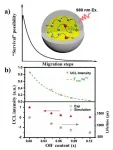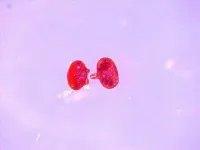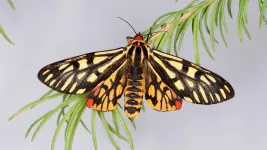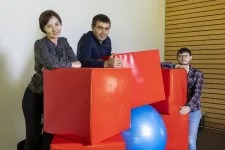Fish adapt to ocean acidification by modifying gene expression
2021-05-27
(Press-News.org) Human-driven global change is challenging the scientific community to understand how marine species might adapt to predicted environmental conditions in the near-future (e.g. hypoxia, ocean warming, and ocean acidification). The effects of the uptake of anthropogenic atmospheric CO2 by oceans affects (i.e. ocean acidification) propagate across the biological hierarchy, from changes in the building blocks of life at nano-scales to organism, physiology and behaviour through ecosystem processes and their properties.
To survive in a reduced pH environment, marine organisms have to adjust their physiology which, at the molecular level, is achieved by modifying the expression of genes. The study of such changes in gene expression can aid in revealing the adaptive mechanisms of life under predicted future ocean acidification conditions.
Making use of natural laboratories
There are a few places on this planet where volcanic activity has CO2 bubbling from the seafloor creating conditions that are similar to those predicted to occur across the oceans in the near-future. Such natural laboratories can then help us to understand what will happen to marine organisms in the future under an ocean acidification scenario. Therefore, researchers from Research Division for Ecology & Biodiversity of the University of Hong Kong (HKU) and Swire Institute of Marine Science, jointly with researchers from the University of Adelaide, travelled to a remote volcanic island of New Zealand called White Island. They collected samples from CO2 seeps and nearby locations, and analysed molecular data from a fish species (the Common triplefin) with ecological evidence of being successfully adapted to acidified environments at CO2 volcanic vents. The findings were published in a peer-reviewed open access journal Evolutionary Applications.
Studying evolutionary mechanism through species mutations
The study found a higher gene expression in gonads in fish living in the CO2 vents with reduced pH than those from control environments with ambient CO2 and pH conditions. Most of those genes were functionally involved in the maintenance of pH homeostasis, increased metabolism, and regulatory functions of downstream biological processes revealing important processes a fish needs to adjust to live in a lower pH environment. Interestingly, it was mainly the male fish with this expression signature hinting at reproductive consequences as males provide parental care of the nests.
When looking at the actual sequence of these genes and their genetic variation, the authors found evidence of a long-term process of natural selection. The genetic changes, which we call mutations, providing the fish with adaptive advantages for living in an acidified, are located in DNA sequences regulating the expression of the genes. These mutations in regulatory sequences would not impact the fitness of the individuals carrying them when living in an ambient pH environment, but these might allow fine-tuned physiological regulation in a reduced pH environment. Such standing genetic variation in DNA regulatory sequences could provide for the adaptive potential to near-future ocean acidification in fishes.
Moreover, the authors propose an evolutionary mechanism by means this adaptive potential to ocean acidification could be maintained in natural populations of fishes. Fish species tend to occur across wide geographical ranges with different pH. Thus, it is likely that similar to what happens in Common triplefins, the genetic variation allowing for life in slightly reduced or variable pH environments already exist within many fish populations. Highly dispersive larvae of fishes contribute to the flow of this genetic variation among the populations of a species. Hence, it might be expected that the genetic variation in regulatory sequences of gene expression efficiently adjusting the physiological responses to reduced pH will provide the raw material for adaptive natural selection in the near-future under increasing ocean acidification.
"The findings of this study imply that one of the more relevant things in terms of the capacity of the marine species to respond to future changes in their environmental conditions is their current genetic variation. Thus, the assessment of the levels of genetic diversity of different marine species is the most important, and we are currently working on it," said Dr Natalia PETIT-MARTY, first author of the paper and Postdoctoral Fellow in the group led by Dr Celia SCHUNTER at Research Division for Ecology and Biodiversity & Swire Institute of Marine Science, HKU.
"We are very fortunate to get to visit these remote places providing us with a glimpse of how the oceans may look like in the future. To make sure our findings are applicable across different marine ecosystems, we also travelled to CO2 vents at tropical coral reefs in Papua New Guinea and rocky reefs in the Mediterranean Sea, and will continue our research on the adaptive potential of marine fishes to ocean acidification," added Dr Celia SCHUNTER, Assistant Professor at Research Division for Ecology and & Swire Institute of Marine Science, HKU.
INFORMATION:
The complete study was first published in Evolutionary Applications on April 8th, 2021. N. Petit-Marty, I. Nagelkerken, S. D. Connell, and C. Schunter. (2021). Natural CO2 seeps reveal adaptive potential to ocean acidification in fish.
The research paper can be accessed from: https://onlinelibrary.wiley.com/doi/10.1111/eva.13239
Images download and captions: https://www.scifac.hku.hk/press
[Attachments] See images for this press release:
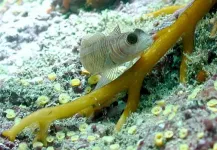
ELSE PRESS RELEASES FROM THIS DATE:
2021-05-27
The great application prospect in biology, medicine, optogenetics, photovoltaics and sustainability has enabled lanthanide ions-doped upconversion nanoparticles to attract widespread attention which derives mainly from their superior anti-Stokes spectroscopic property. However, the relatively low upconversion efficiency remains a major bottleneck on their way of actual applications. Internal OH- impurity is known as one of the main detrimental factors affecting the upconversion efficiency of nanomaterials. Different from surface/ligand related emission quenching which can be effectively diminished by, e.g., core/shell structure, internal OH- is easy to be introduced during synthesis but difficult to be quantified and controlled.
In a new paper published in Light Science ...
2021-05-27
PHILADELPHIA--Antibodies aren't the only immune cells needed to fight off COVID-19 -- T cells are equally important and can step up to do the job when antibodies are depleted, suggests a new Penn Medicine study of blood cancer patients with COVID-19 published in Nature Medicine. The researchers found that blood cancer patients with COVID-19 who had higher CD8 T cells, many of whom had depleted antibodies from cancer treatments, were more than three times likelier to survive than patients with lower levels of CD8 T cells.
"It's clear T cells are critical in terms of the early infection and to help control the virus, but we also showed that they can compensate for B cell and antibody responses, which blood cancer patients are likely missing because of the drugs," said co-senior author Alexander ...
2021-05-27
PULLMAN, Wash. -- A new fungus strain could provide a chemical-free method for eradicating mites that kill honey bees, according to a study published this month in Scientific Reports.
A team led by Washington State University entomologists bred a strain of Metarhizium, a common fungus found in soils around the world, to work as a control agent against varroa mites. Unlike other strains of Metarhizium, the one created by the WSU research team can survive in the warm environments common in honey bee hives, which typically have a temperature of around 35 Celsius (or 95 F).
"We've known that metarhizium could kill mites, but it was expensive and didn't last long because the fungi died in the hive heat," said Steve Sheppard, professor in WSU's Department of Entomology and corresponding ...
2021-05-27
A research group at the University of Córdoba evaluated the commercial mixture formulated in a laboratory and the tank-based mixture of two herbicides to determine which method is more effective in terms of weed control and environmental impact.
In 2017 the company Nufarm Europe proposed to the Higher Technical School of Agricultural and Forestry Engineering (ETSIAM) at the UCO a study of the results of two products having a significant agronomic impact: the herbicides glyphosate and 2,4-D (synthetic auxin). After three years of research, they concluded that the commercial mix produced in the company's laboratories is more effective than manual mixes produced in tanks.
To do this, they used in vivo techniques (tests with greenhouse ...
2021-05-27
MAY 26, 2021 -- Researchers from UTSA, the University of Central Florida (UCF), the Air Force Research Laboratory (AFRL) and SRI International have developed a new method that improves how artificial intelligence learns to see.
Led by Sumit Jha, professor in the Department of Computer Science at UTSA, the team has changed the conventional approach employed in explaining machine learning decisions that relies on a single injection of noise into the input layer of a neural network.
The team shows that adding noise--also known as pixilation--along multiple layers of a network provides a more robust representation of an image that's recognized by the AI ...
2021-05-27
The Menetries' tiger moth (Arctia menetriesii) is one of the rarest and most poorly studied Palaearctic moth species. Even though its adult individuals are large and brightly coloured, they are difficult to spot, because they aren't attracted to light, they're not active at night, and they fly reluctantly. Currently, the species only inhabits two countries - Finland and the Russian Federation, and is included in the Red Lists of both, as Data Deficient in the former and Vulnerable in the latter.
For 13 years, researcher Evgeny Koshkin of the Institute of Water and Ecology Problems of the Far ...
2021-05-27
Men aged 65 and over should monitor their sleep patterns and seek medical advice after a warning from Flinders University experts that disrupted slumber can be linked to cognitive dysfunction.
In a new article published in the Journal of Sleep Research, the Adelaide Institute for Sleep Health research group studied a group of 477 middle-aged and older men's attention and processing speed in relation to their sleep.
The participants from the Florey Adelaide Male Ageing Study undertook cognitive testing and a successful sleep study.
"Less deep sleep and more light sleep is related to slower responses on cognitive function tests," says lead author Jesse Parker. ...
2021-05-27
To really appreciate what a team of researchers led by Maksym Kovalenko and Maryna Bodnarchuk has achieved, it is best to start with something mundane: Crystals of table salt (also known as rock salt) are familiar to anyone who has ever had to spice up an overtly bland lunch. Sodium chloride - NaCl in chemical terms - is the name of the helpful chemical; it consists of positively charged sodium ions (Na+) and negatively charged chloride ions (Cl-). You can imagine the ions as beads that strongly attract each other forming densely packed and rigid crystals like the ...
2021-05-27
Scientists at Nanyang Technological University, Singapore (NTU Singapore) have developed a new biomaterial made entirely from discarded bullfrog skin and fish scales that could help in bone repair.
The porous biomaterial, which contains the same compounds that are predominant in bones, acts as a scaffold for bone-forming cells to adhere to and multiply, leading to the formation of new bone.
Through laboratory experiments, the NTU Singapore team found that human bone-forming cells seeded onto the biomaterial scaffold successfully attached themselves and started multiplying - a sign of growth. They also found that the risk of the biomaterial triggering an inflammatory response is low.
Such a scaffold could be used to help with the regeneration of ...
2021-05-27
The parents of children with rare diseases face exceptional circumstances which influence their role as parents. Sometimes, the role of caregivers is added to that of parents. On other occasions, especially with the most serious cases, the former becomes more prominent than the latter. There are also cases in which both roles coexist separately, allowing them to be parents and caregivers in equal measure. However, whichever group they belong to, they need trust and to overcome fear in order to live their experience without overwhelming anxiety.
This is one of the findings of an open-access study published in the International Journal of Environmental ...
LAST 30 PRESS RELEASES:
[Press-News.org] Fish adapt to ocean acidification by modifying gene expression

